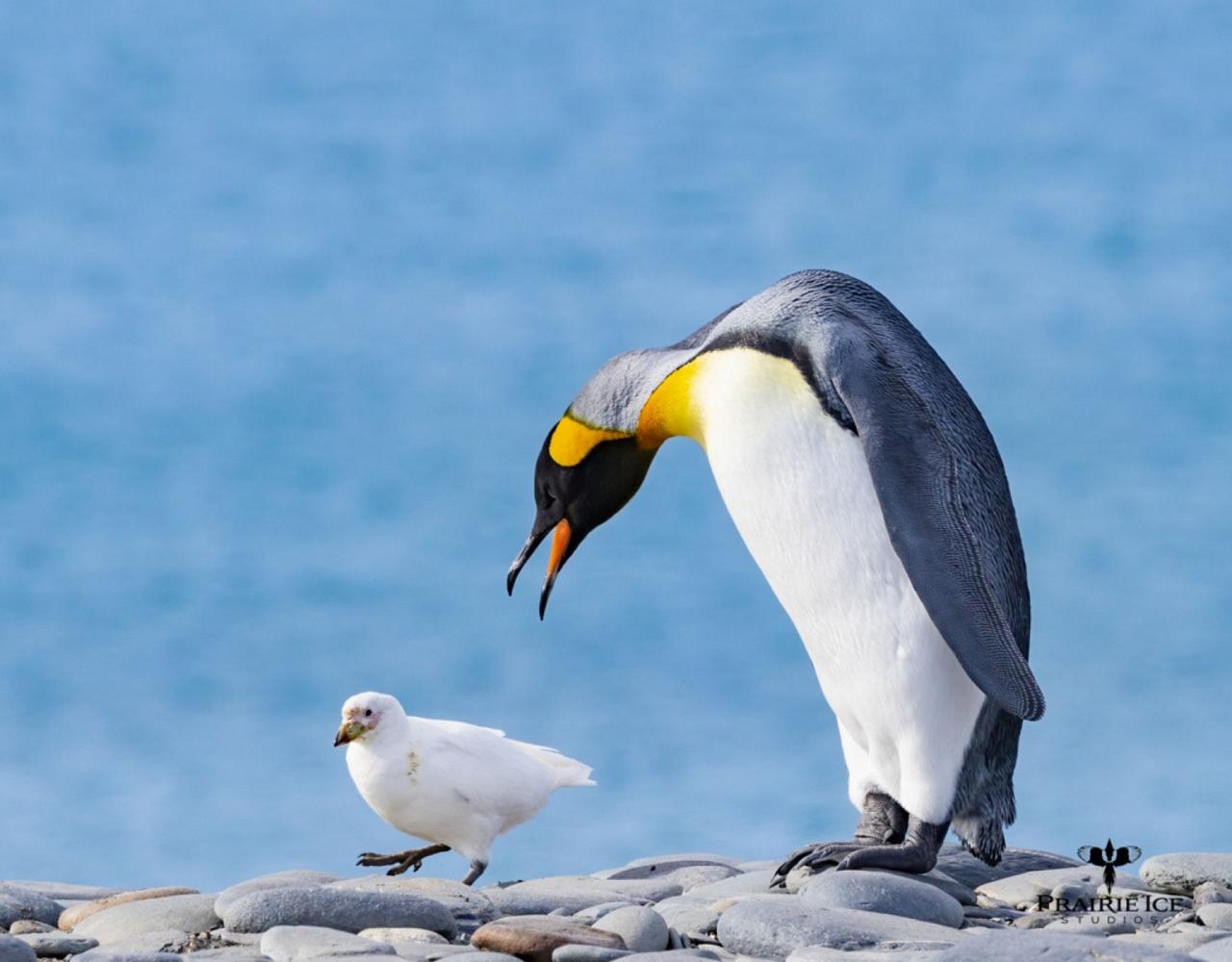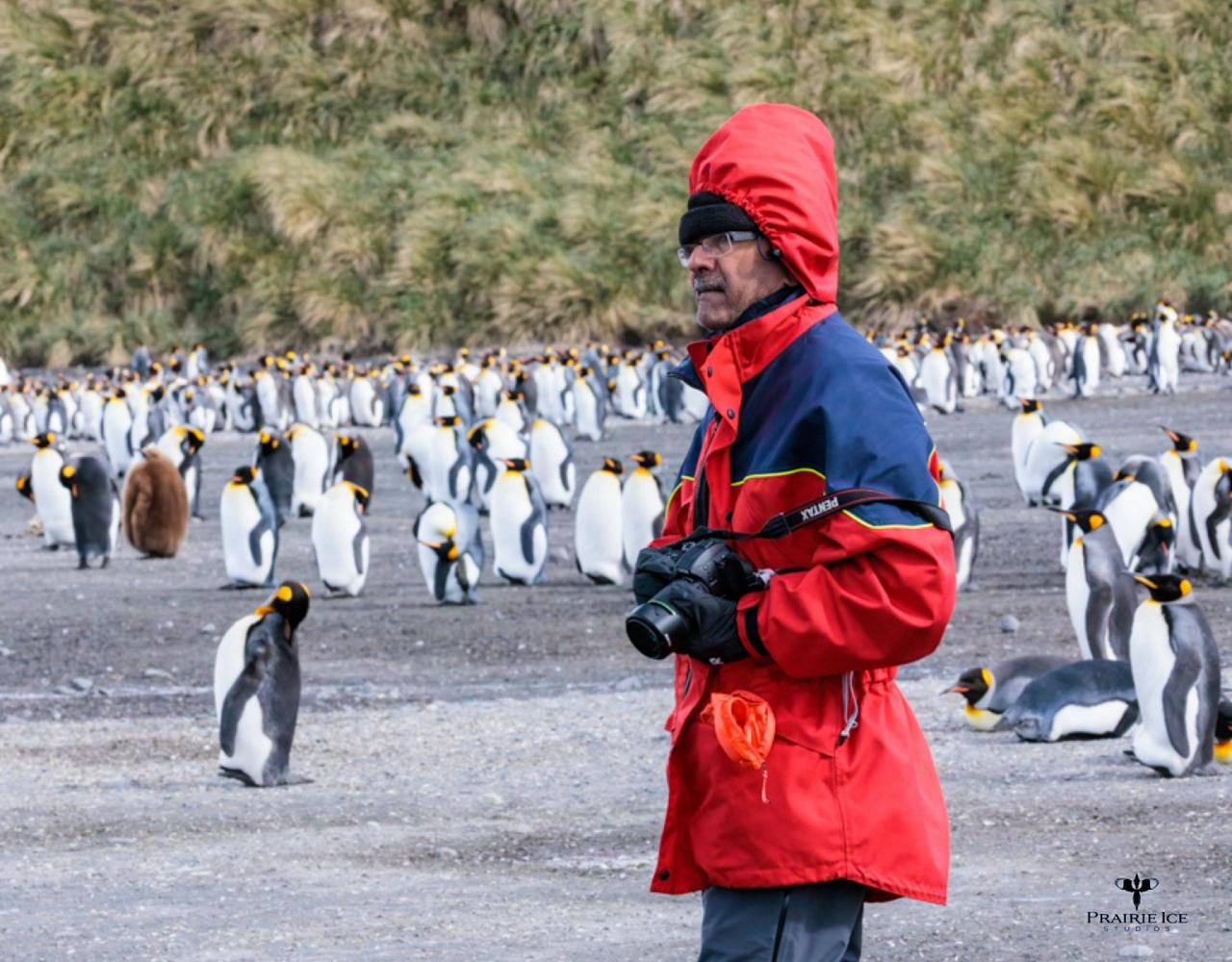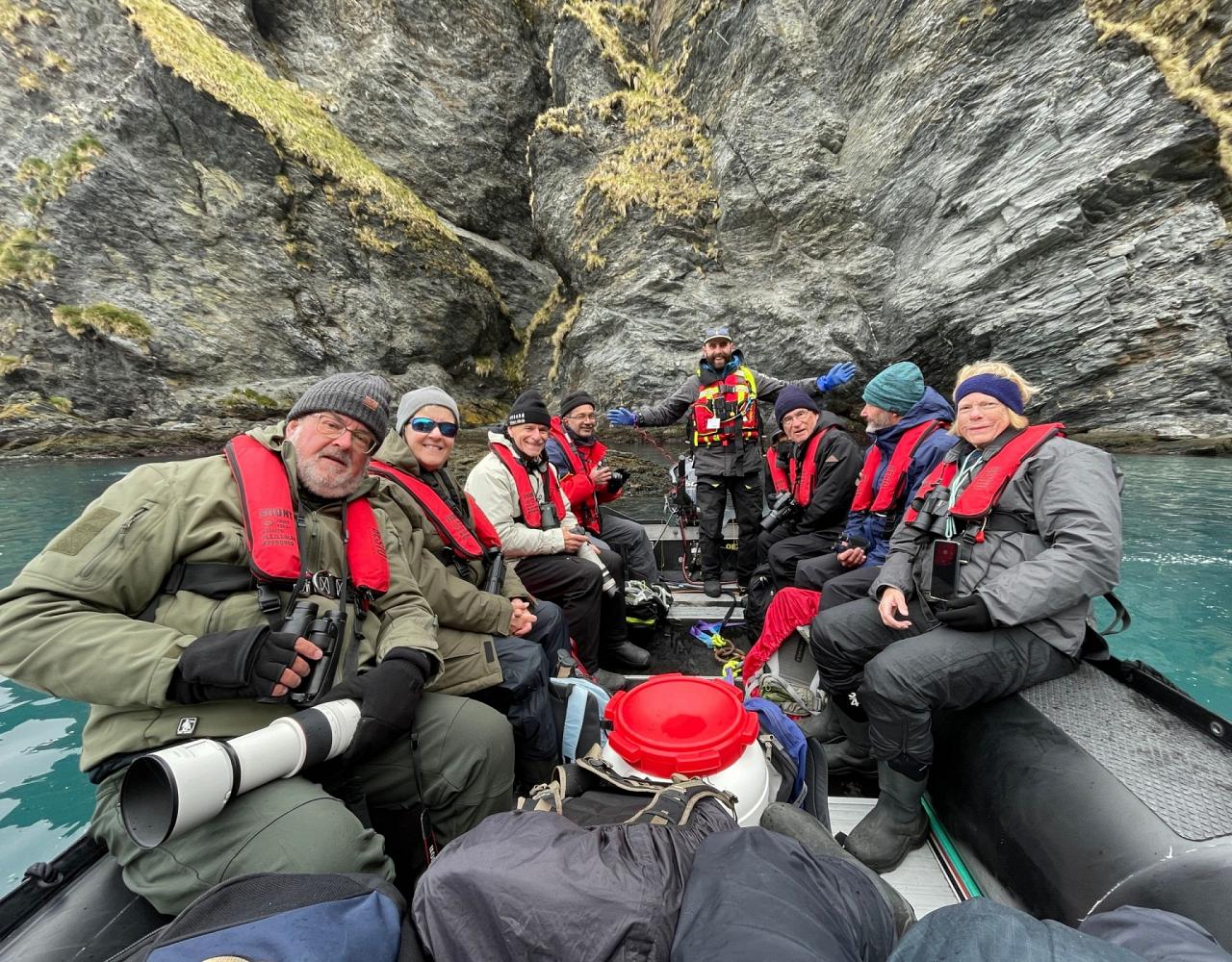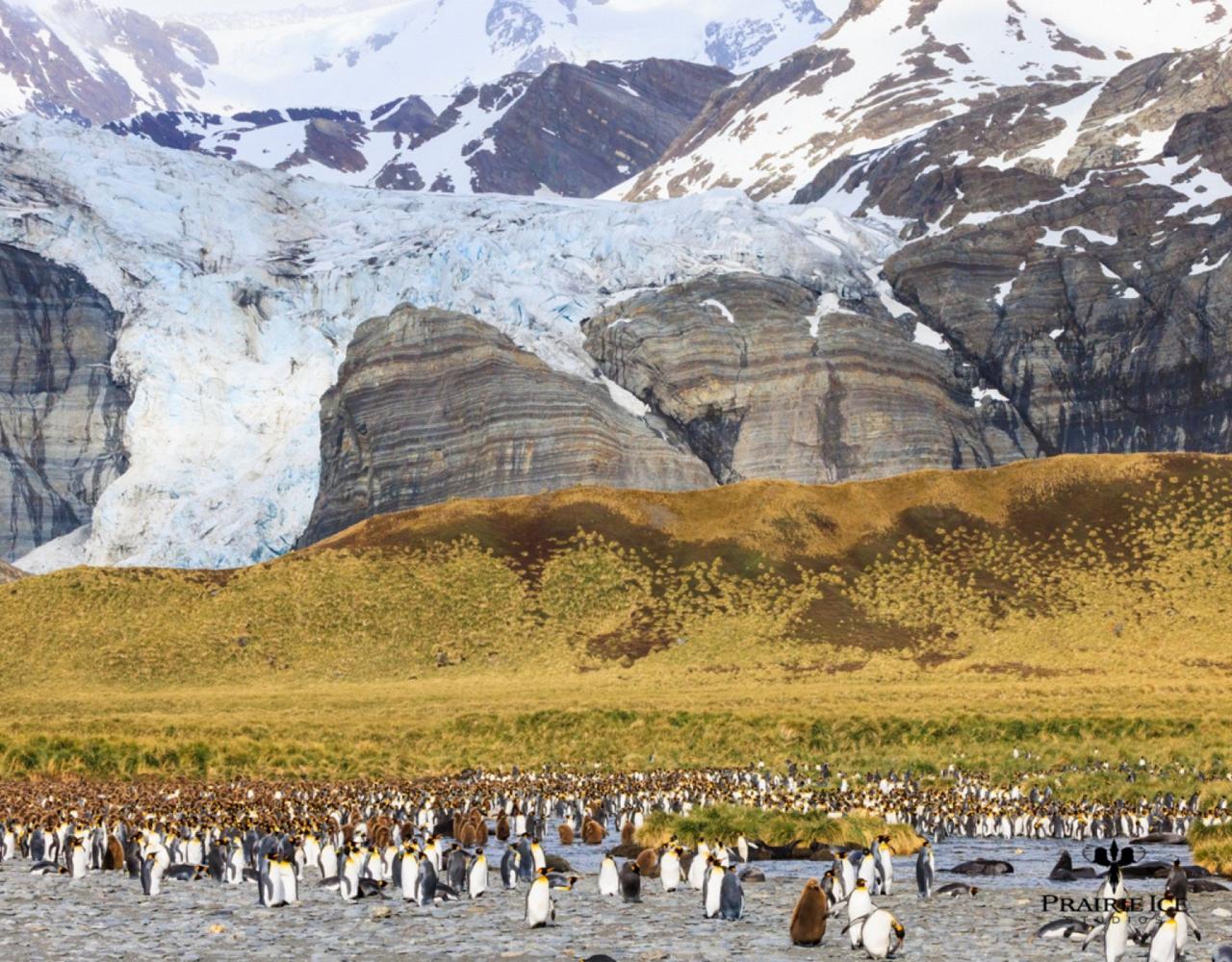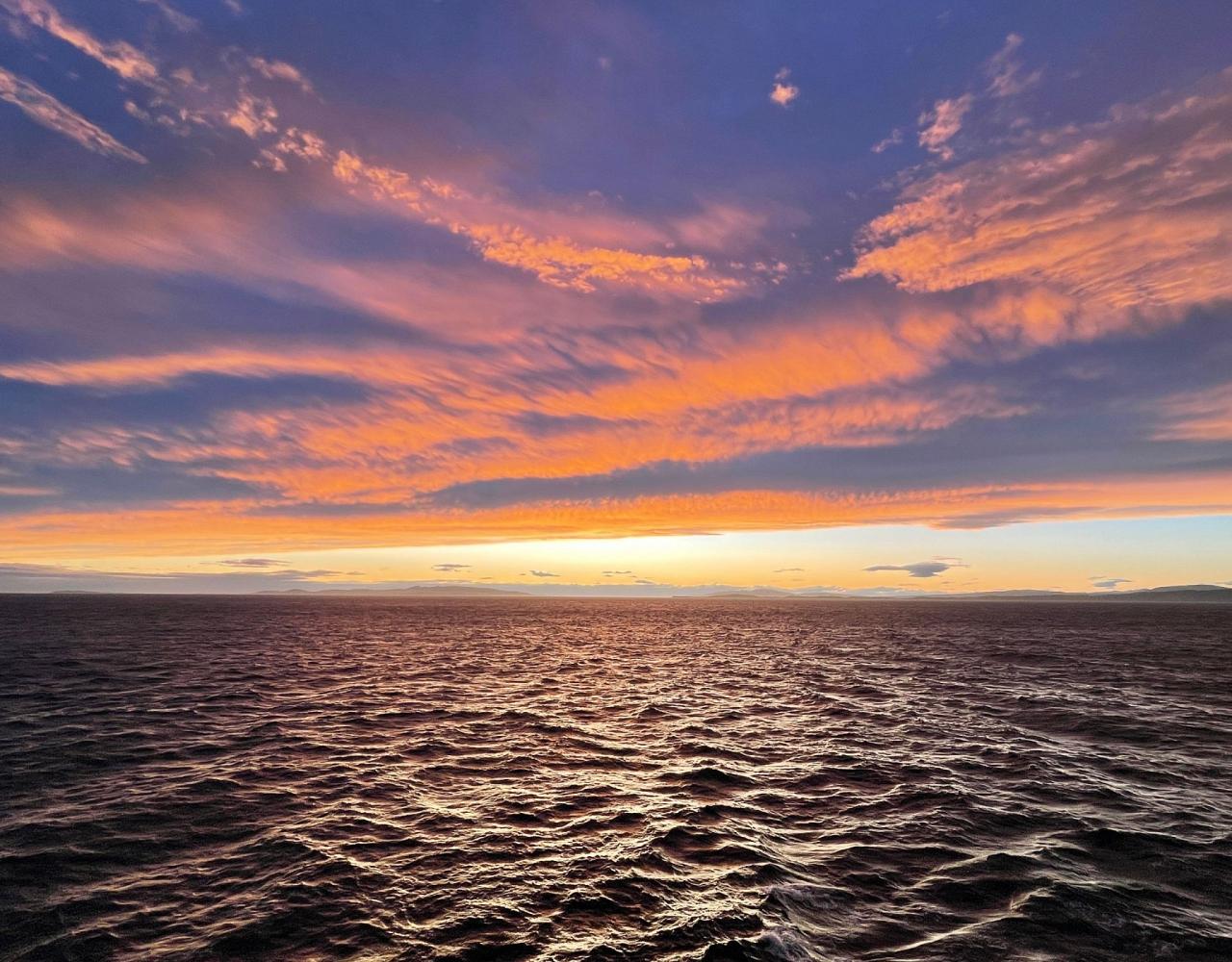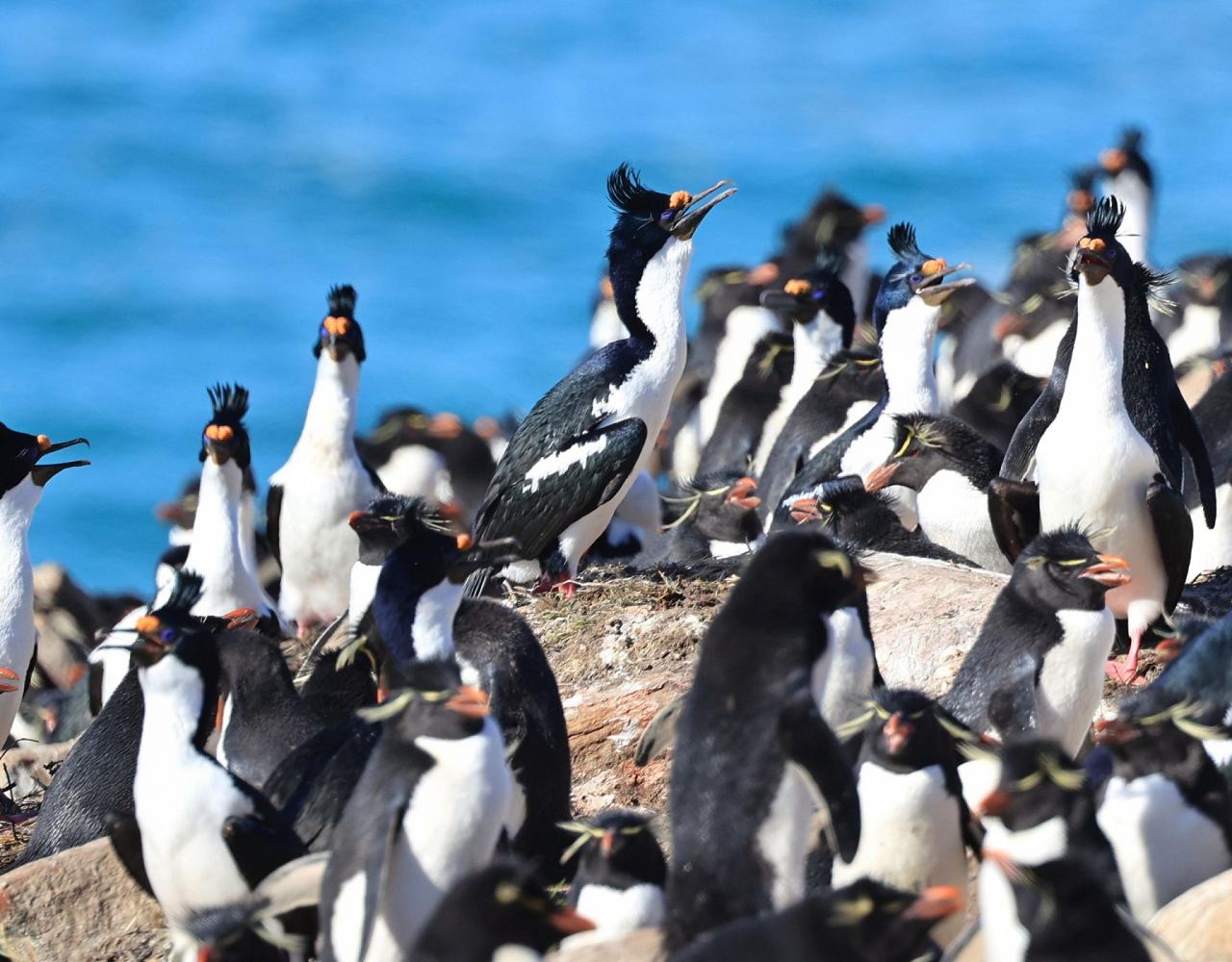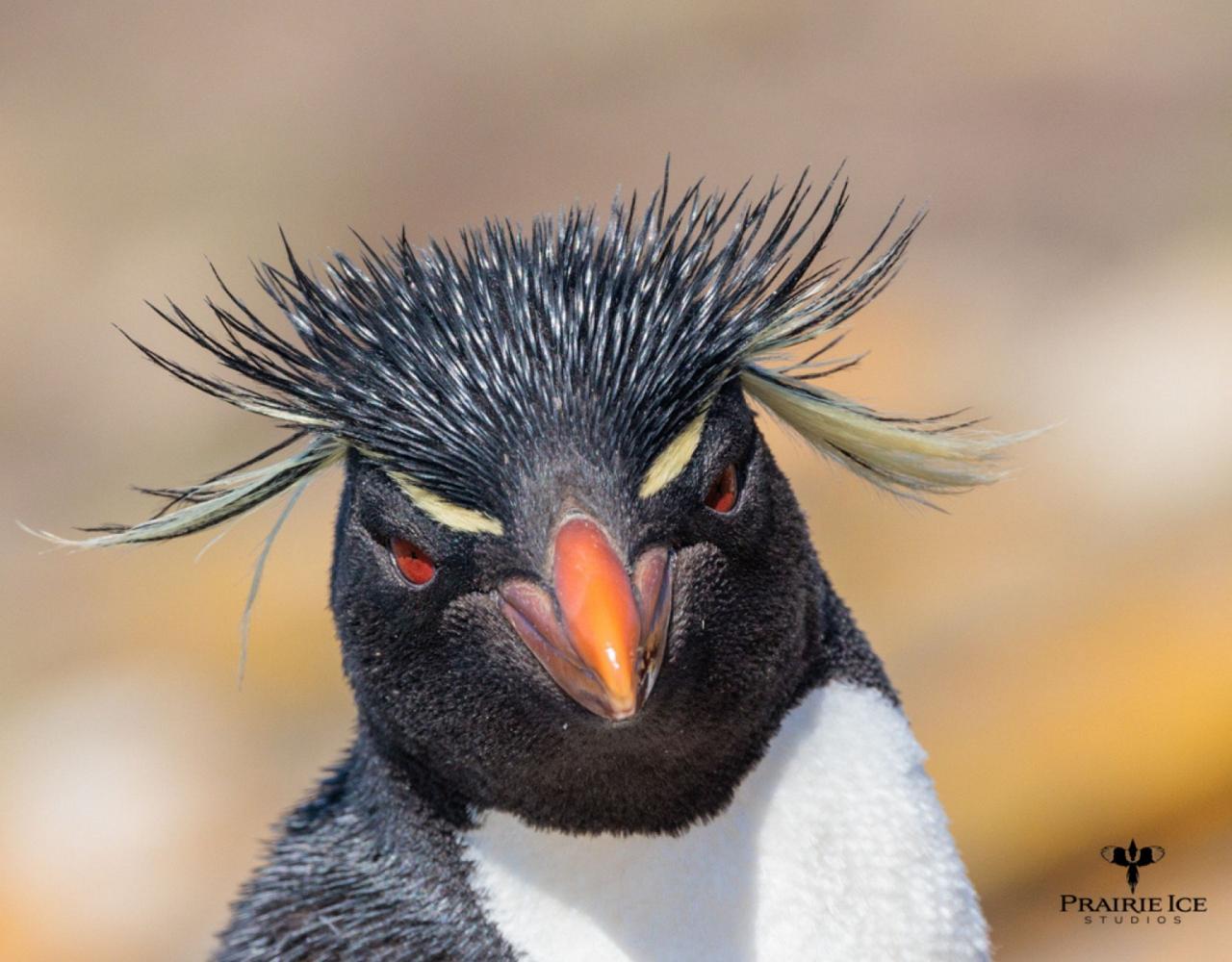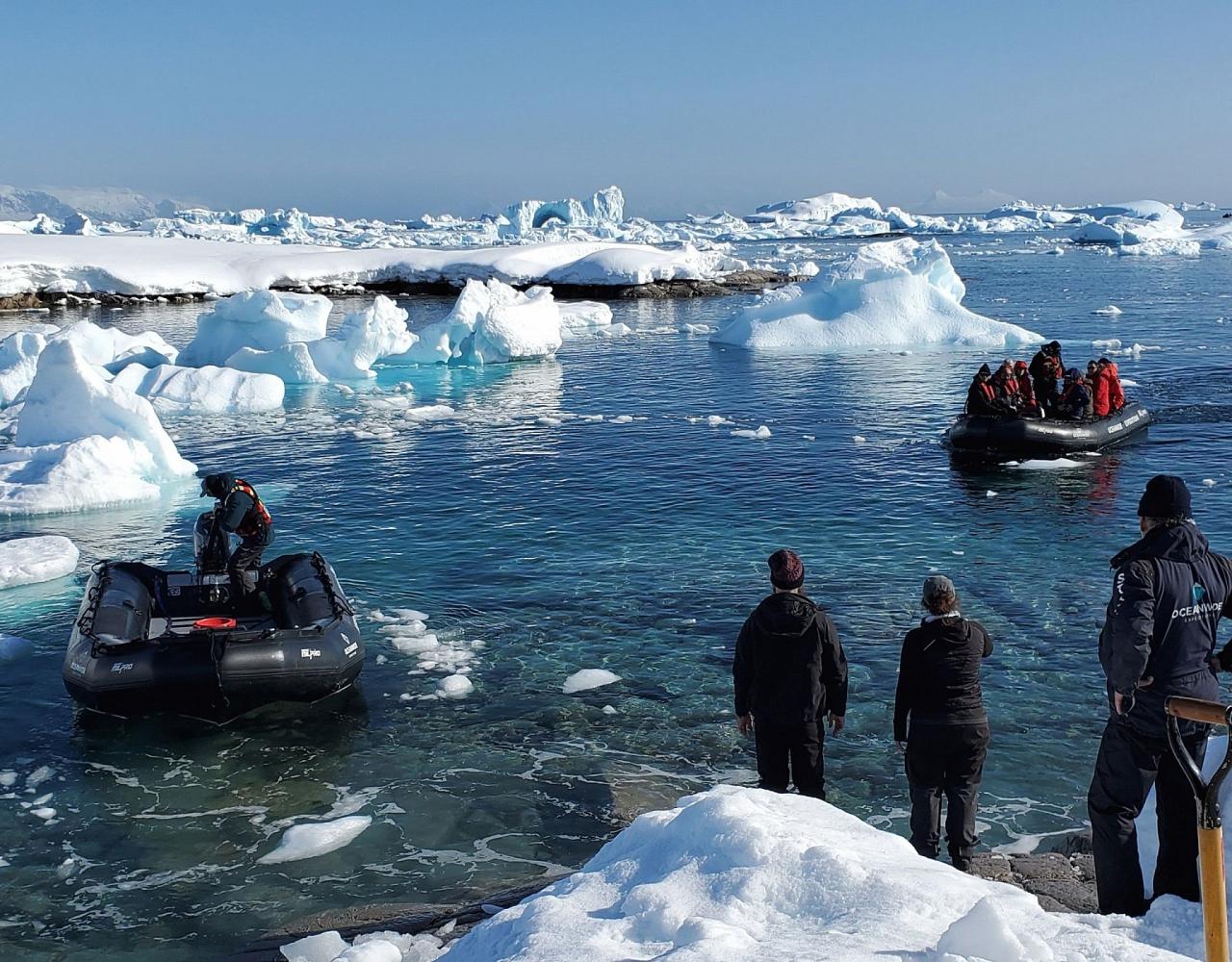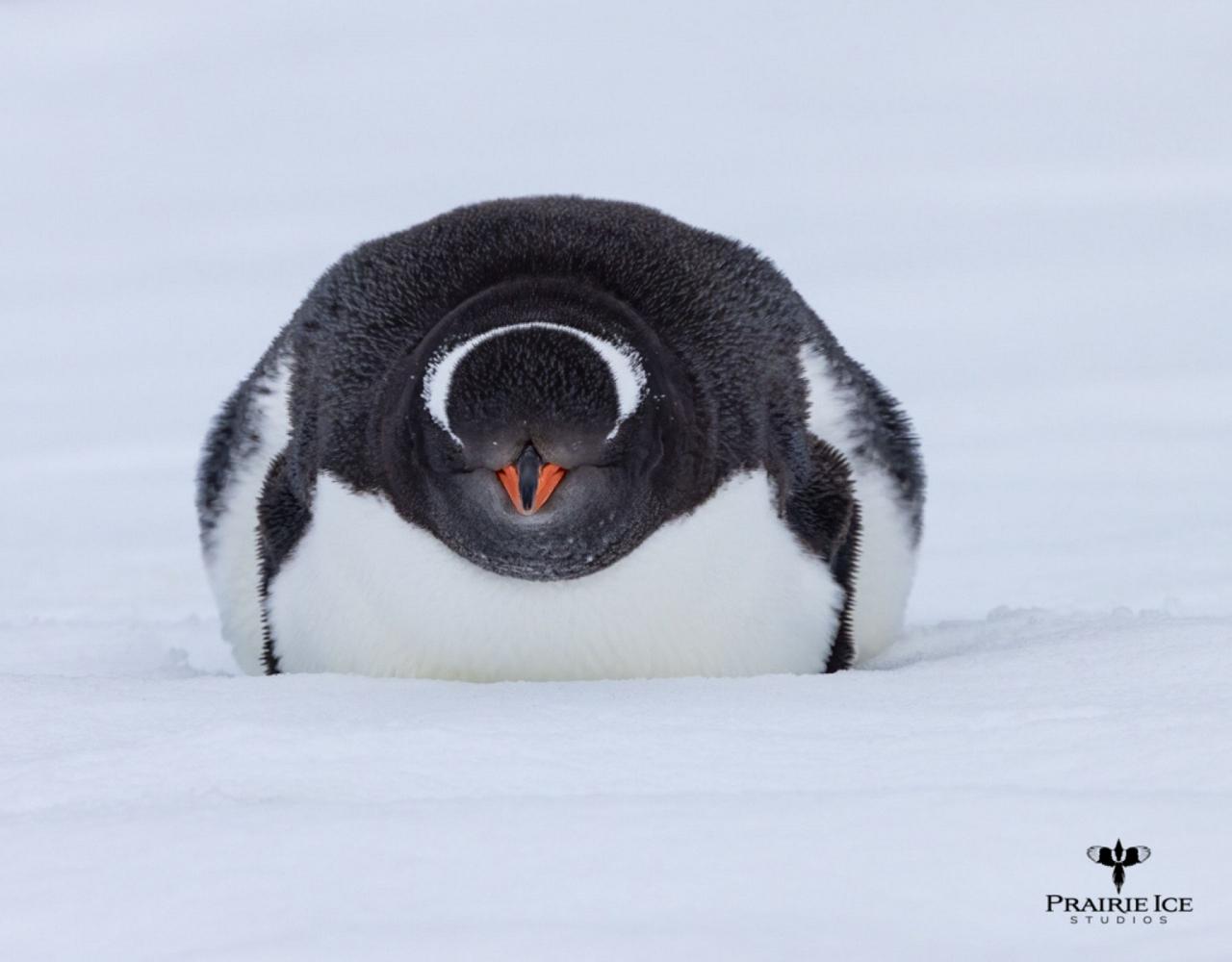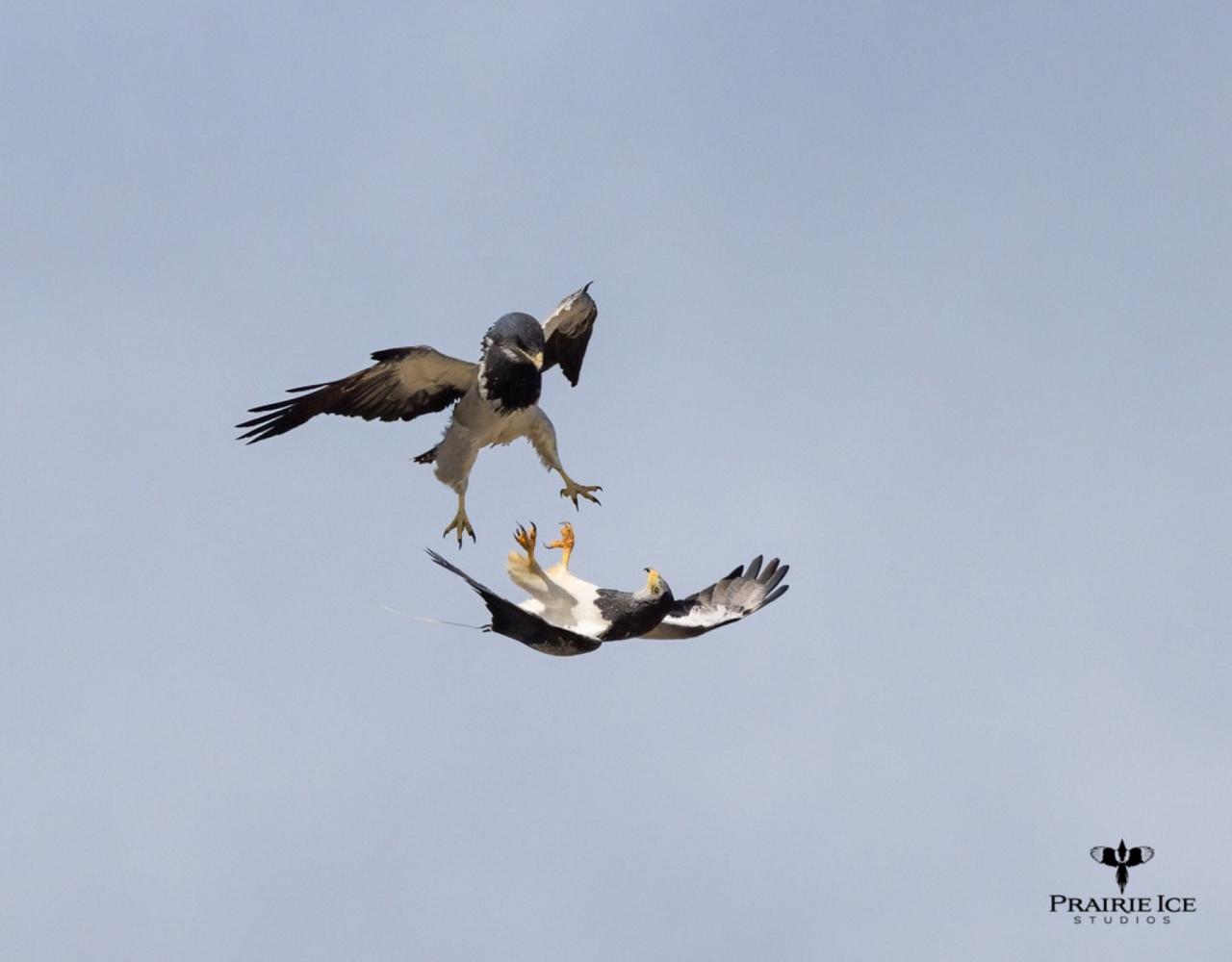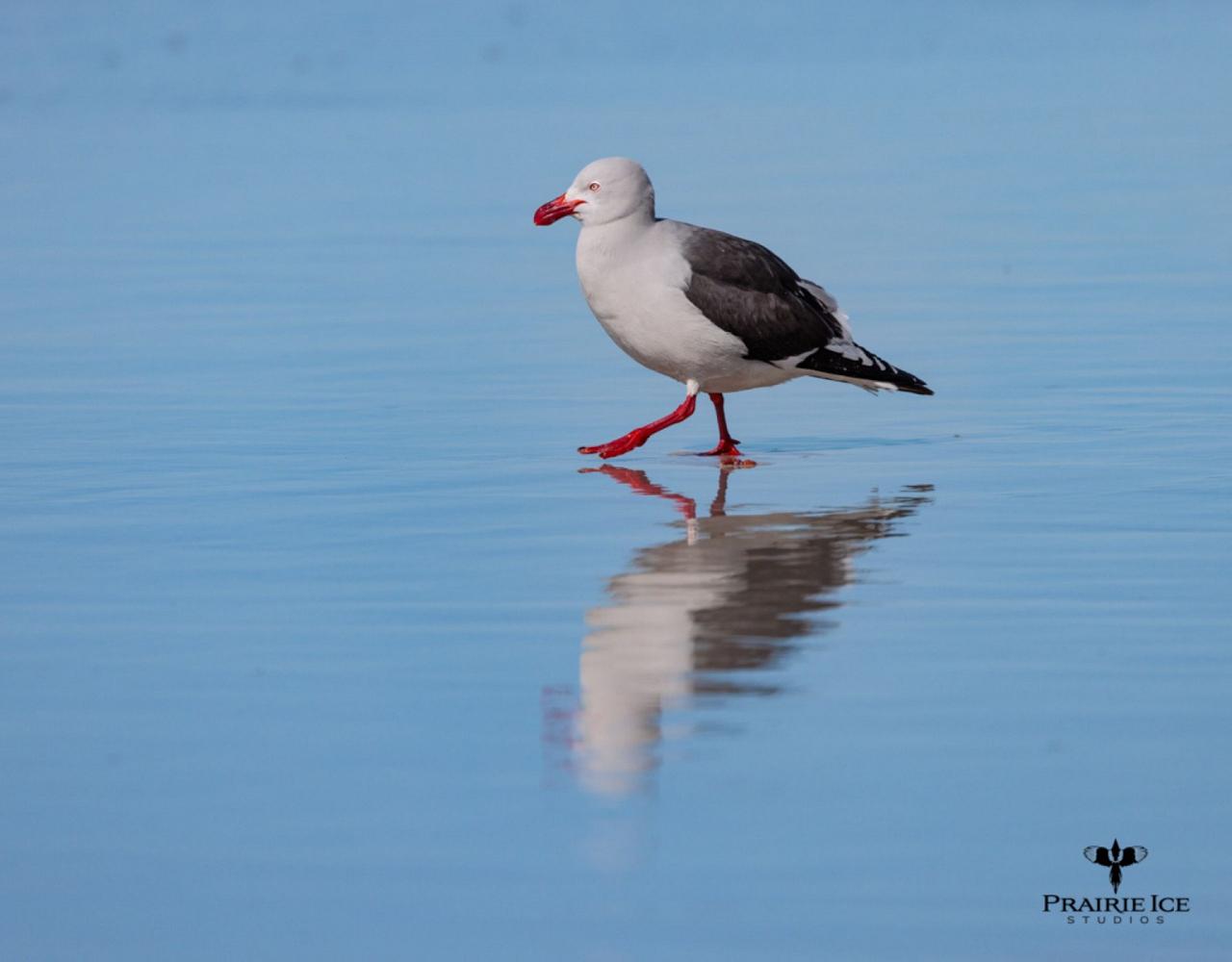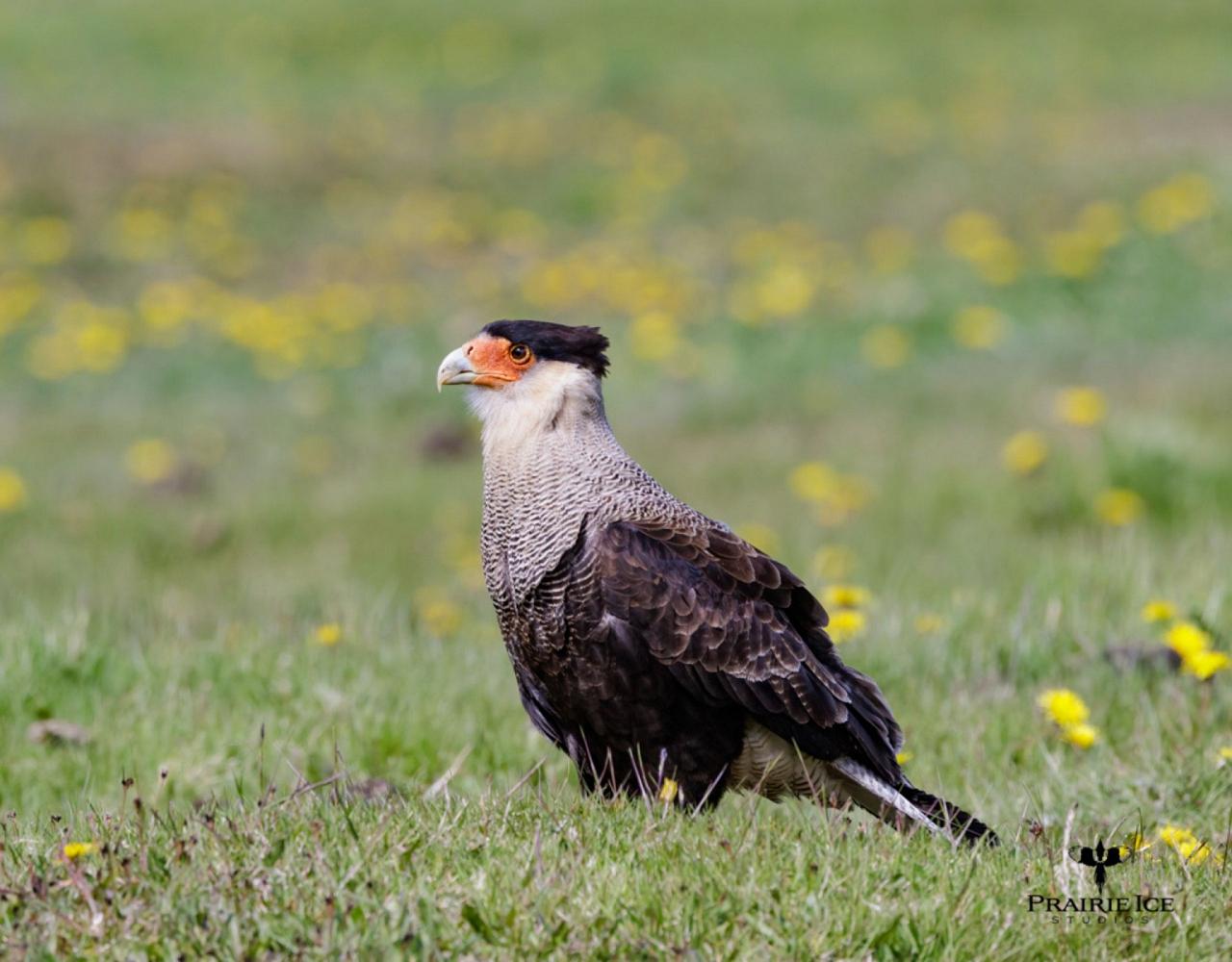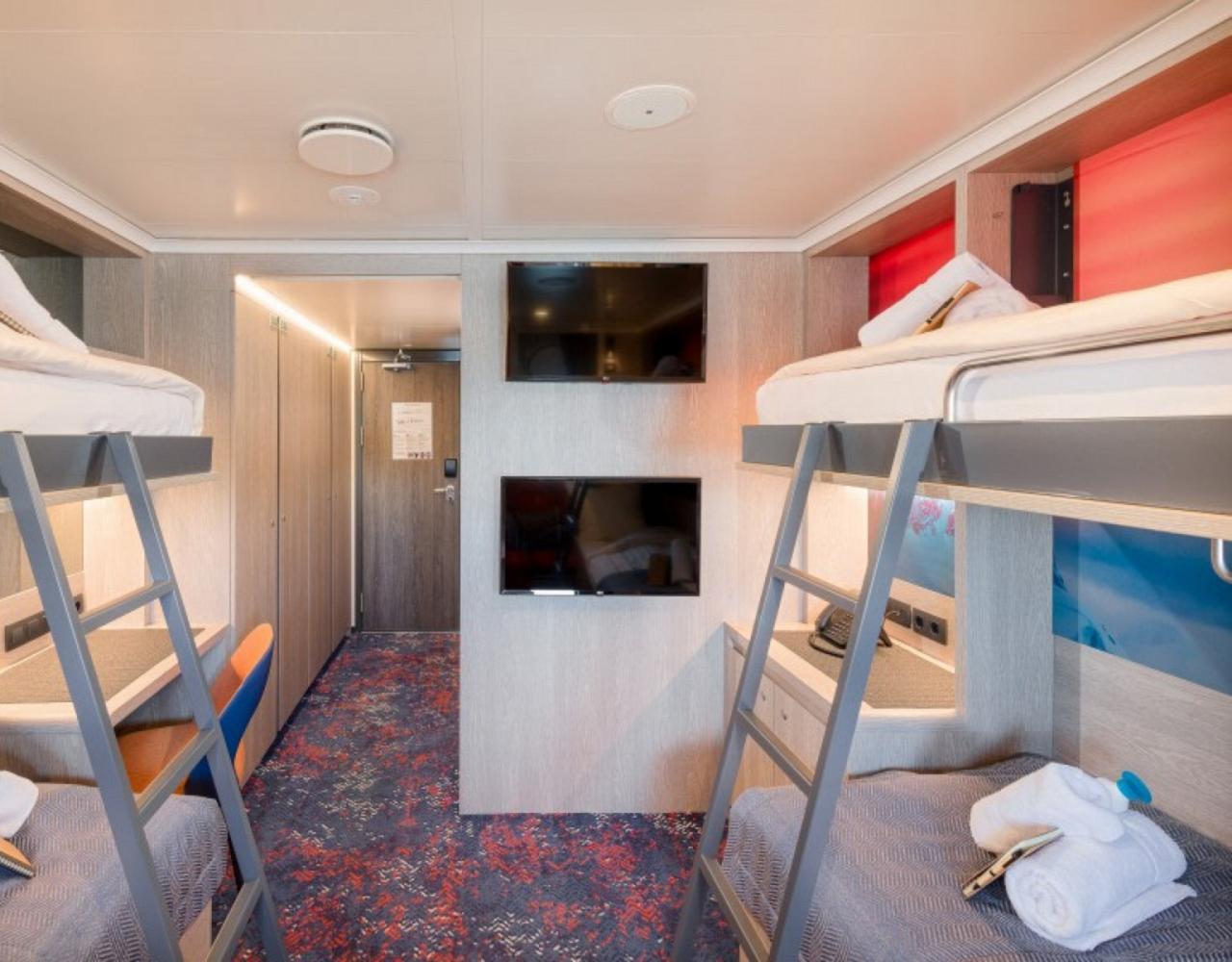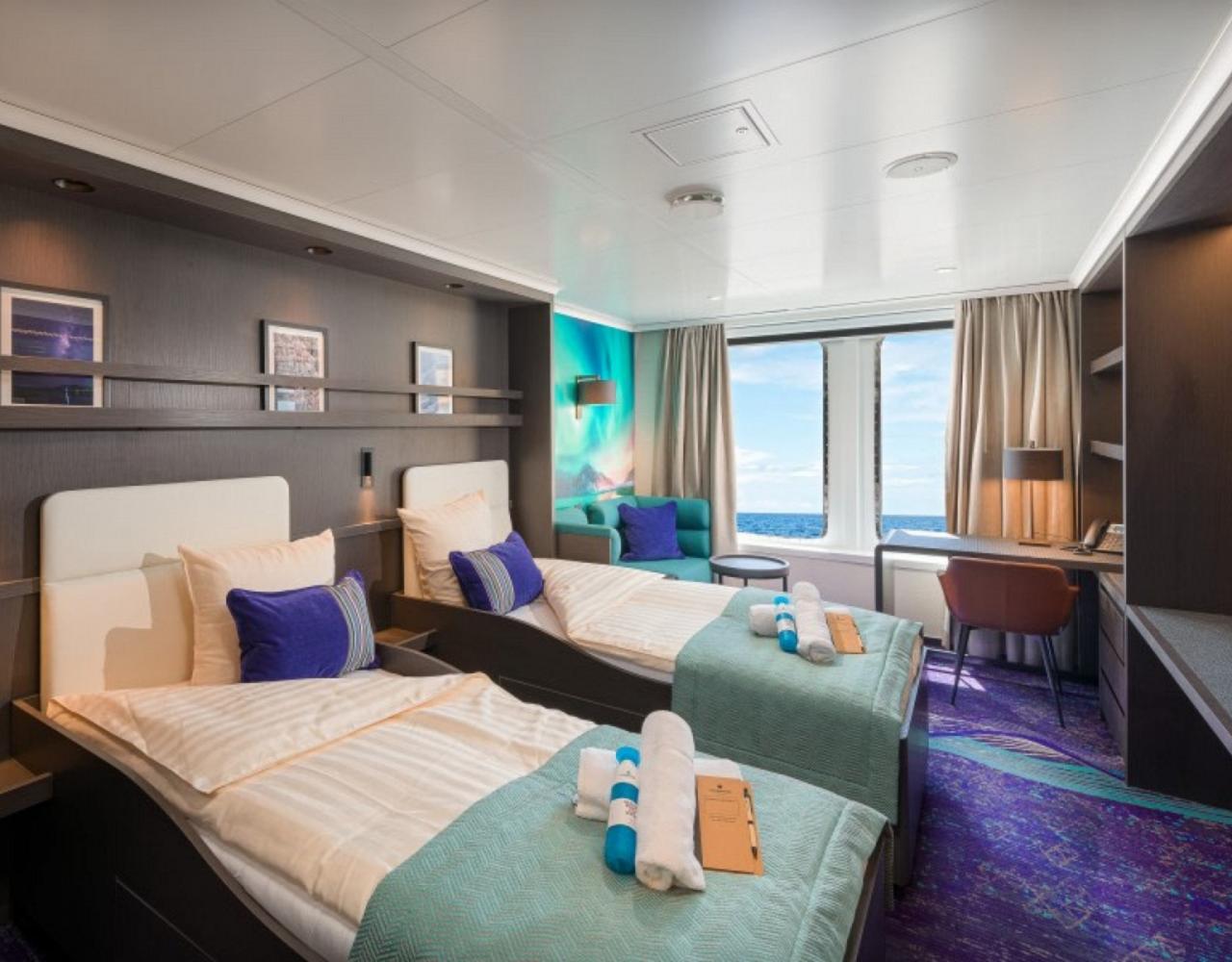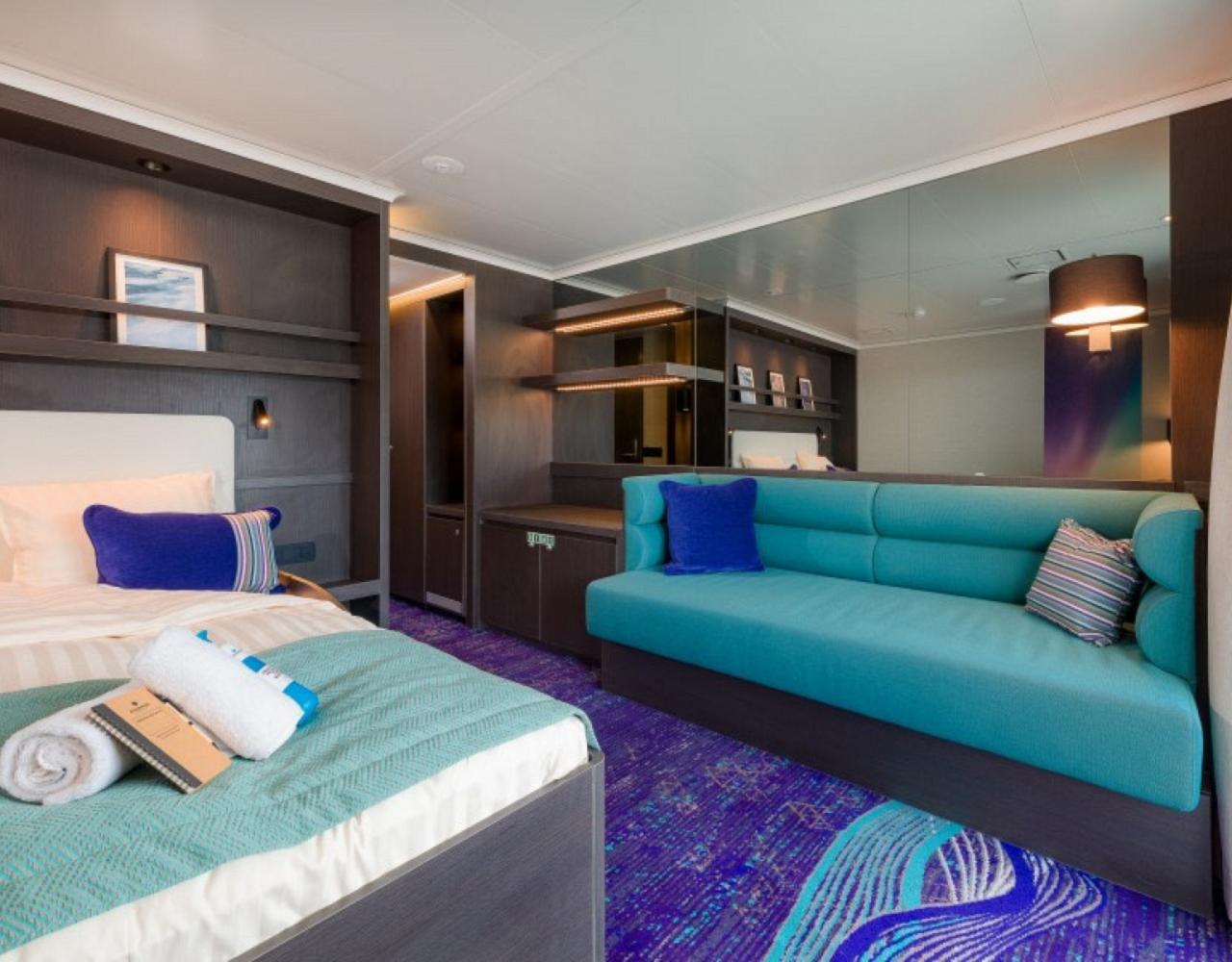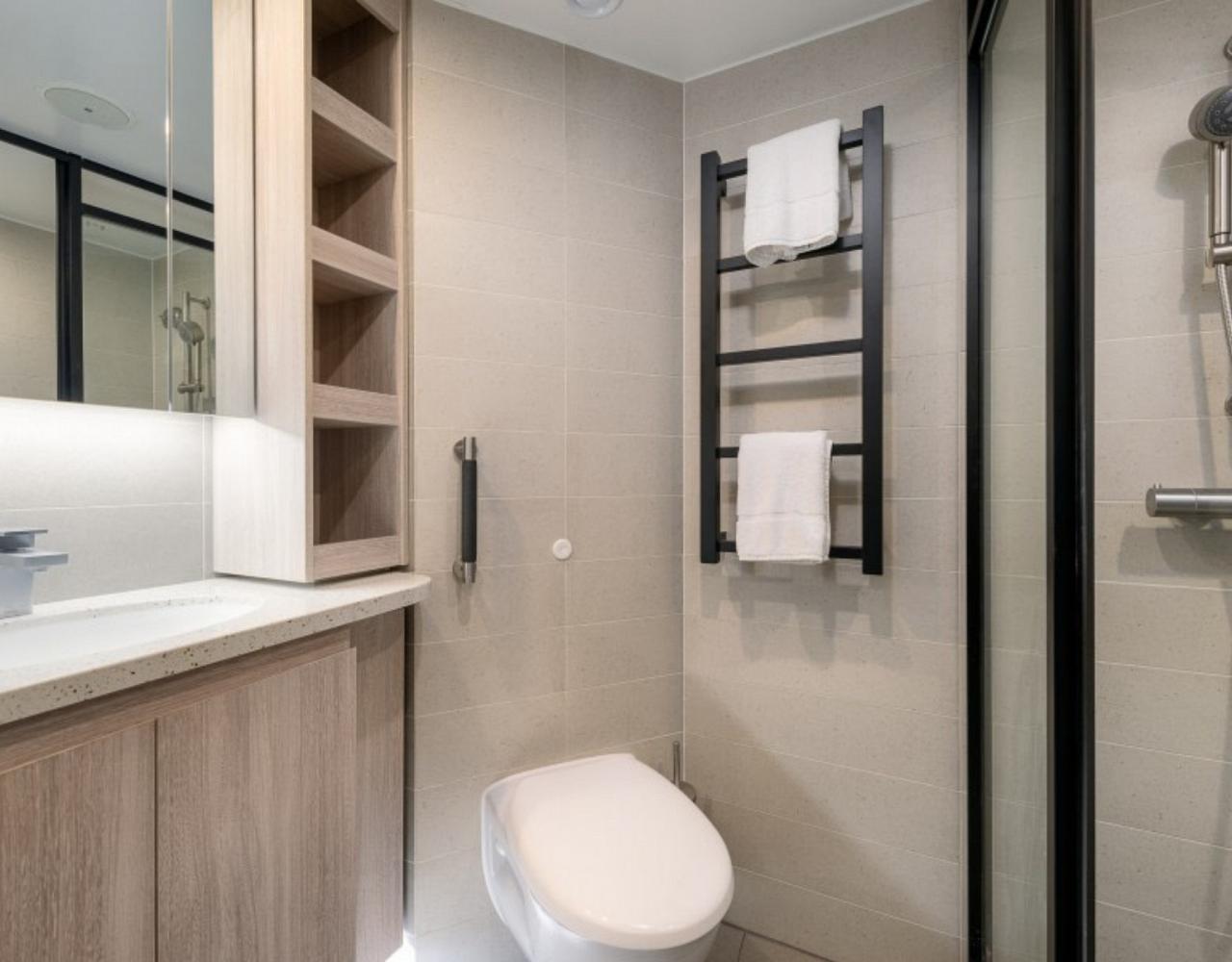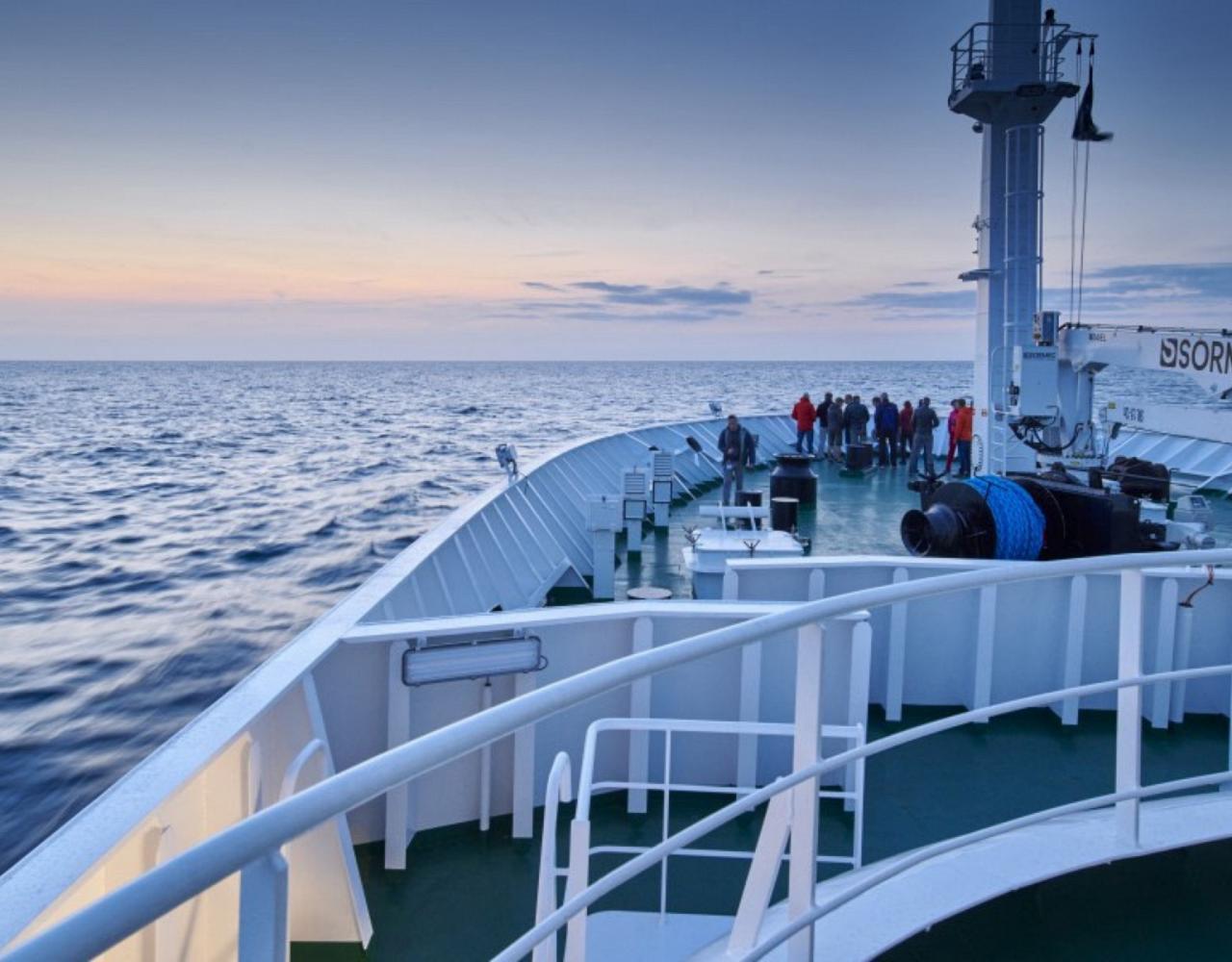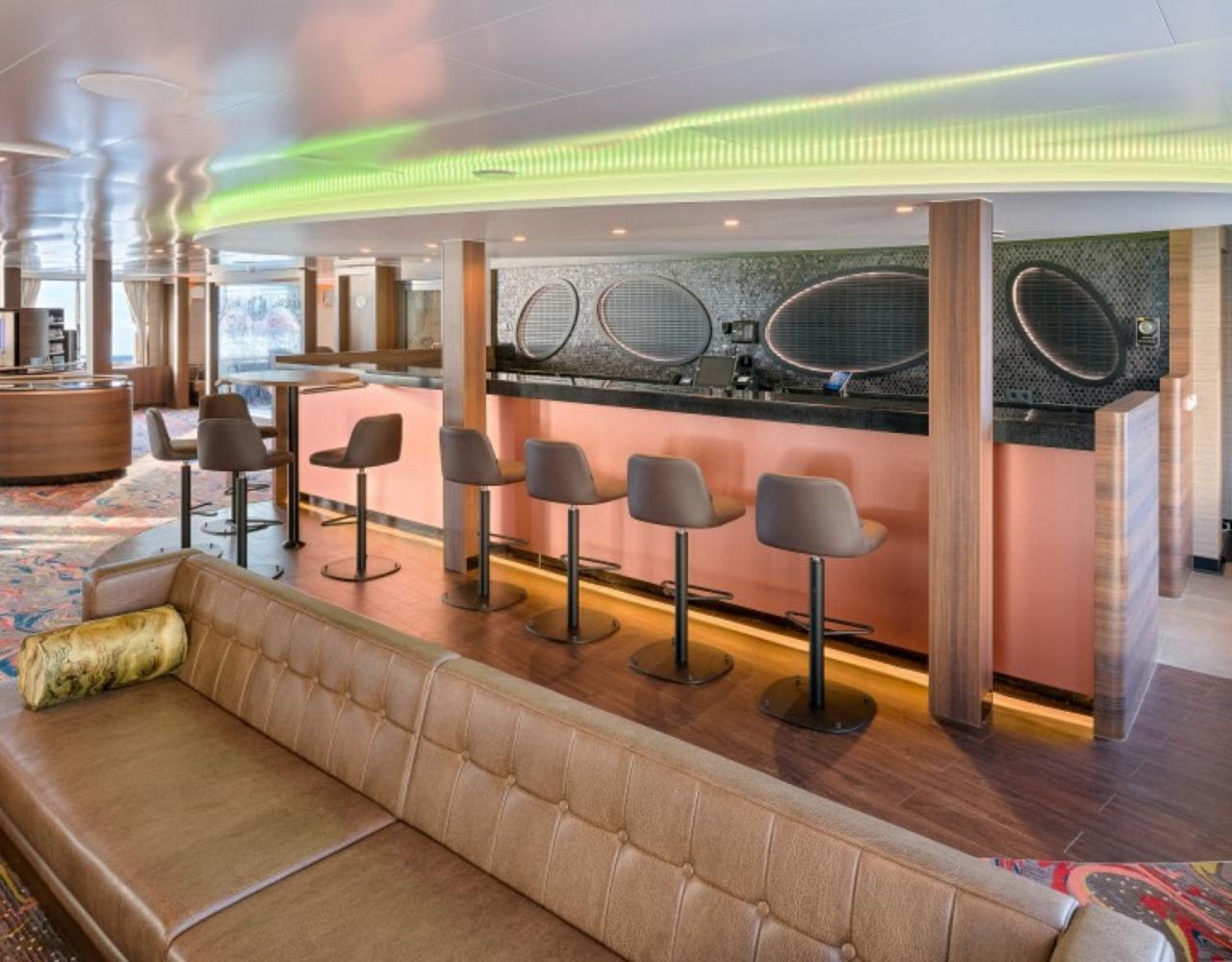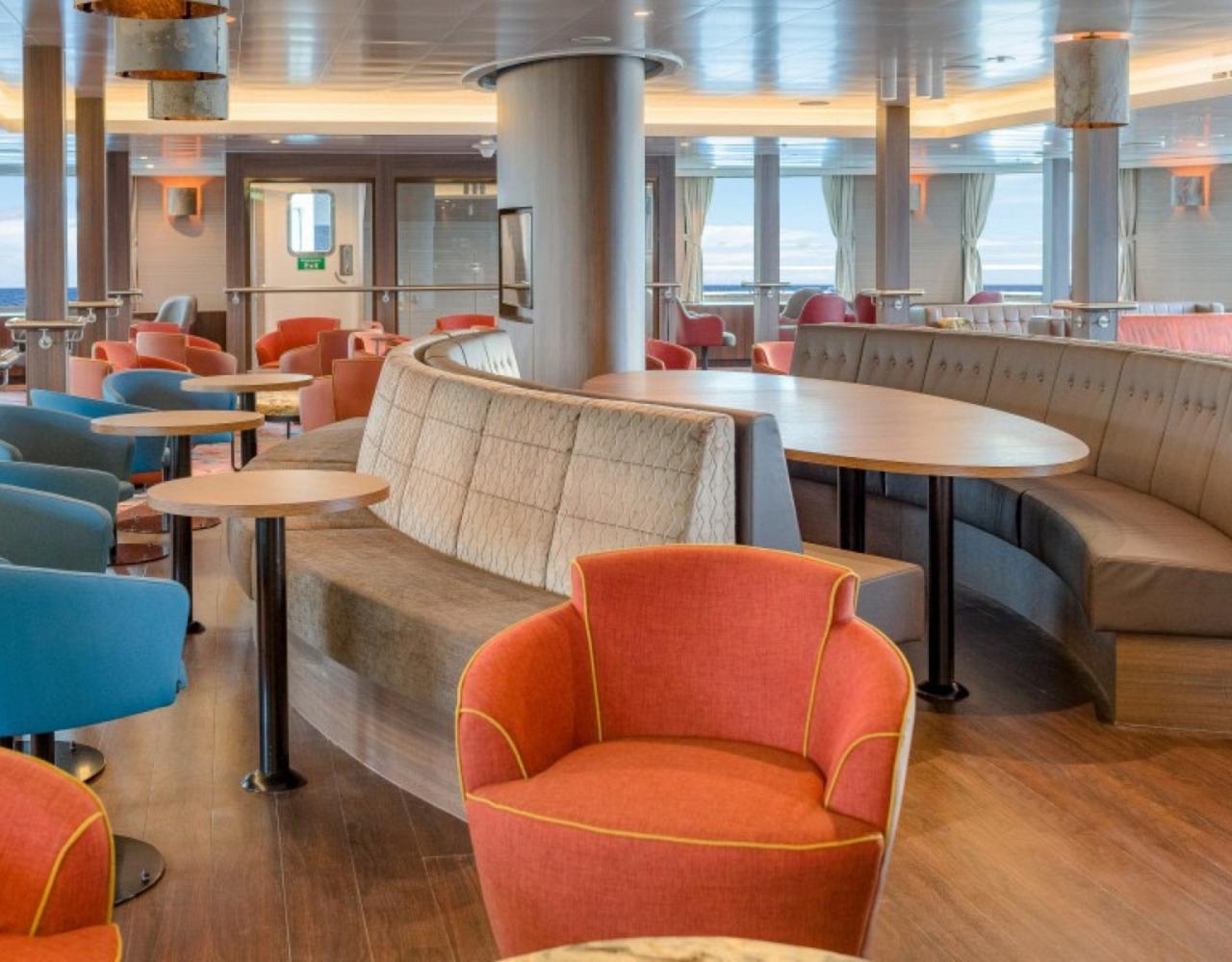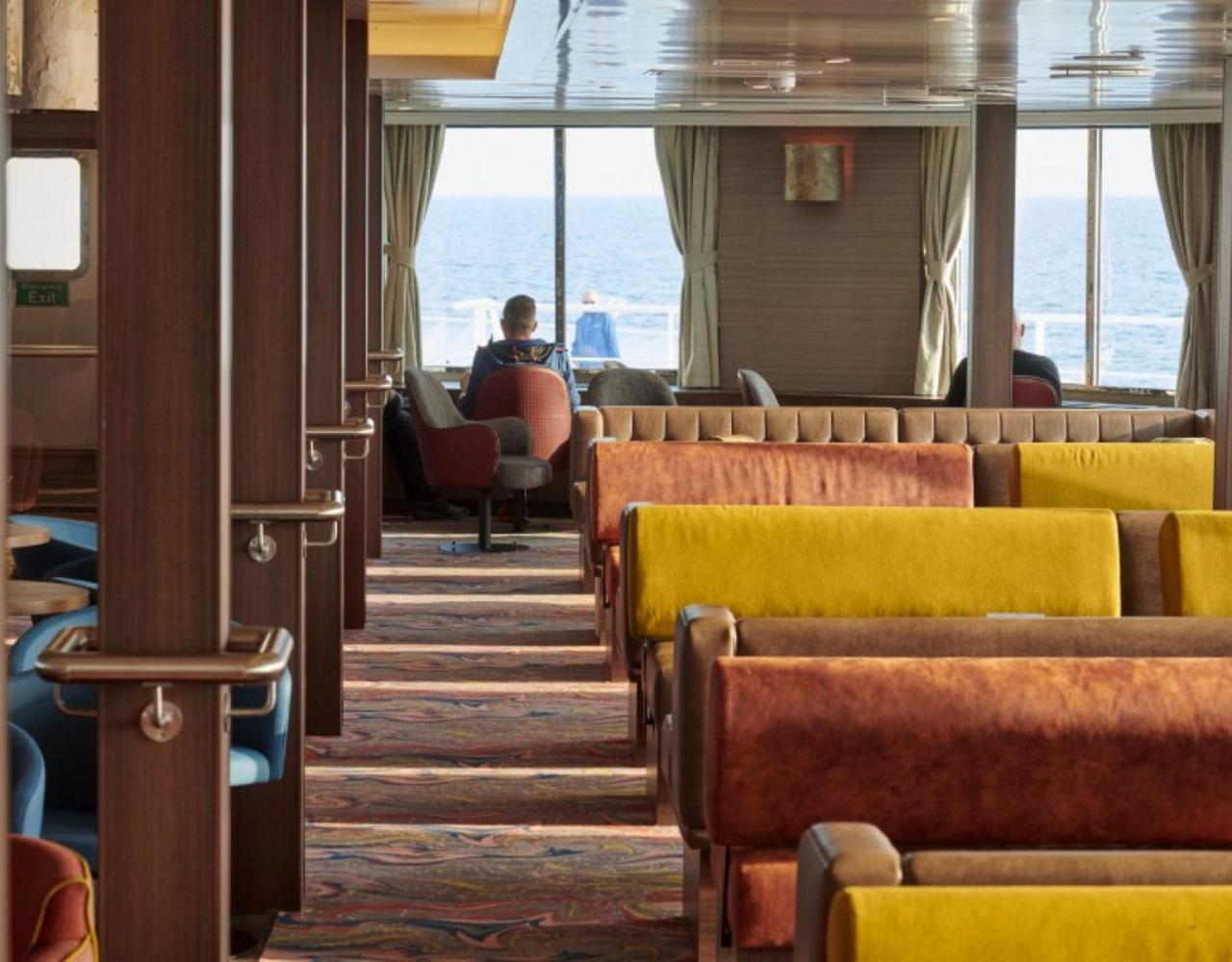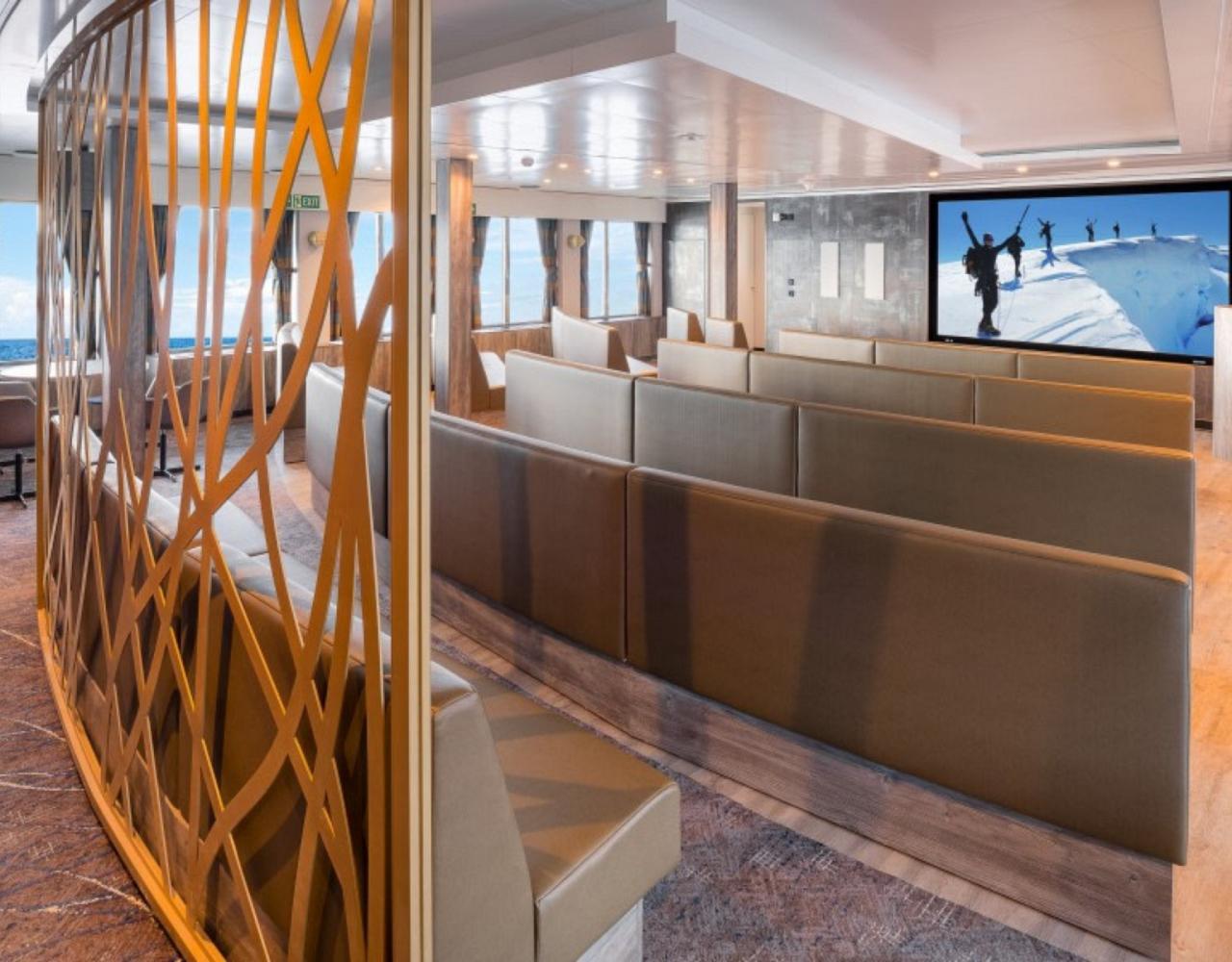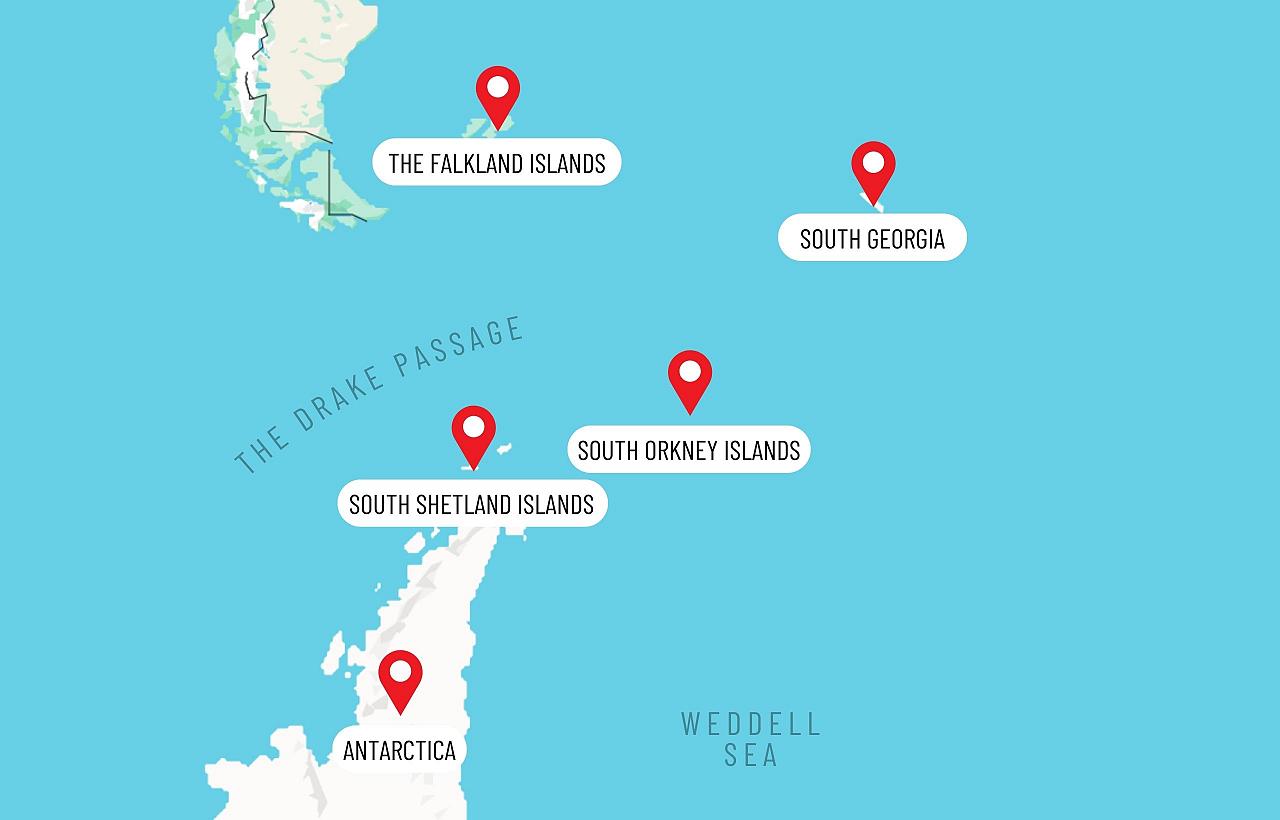- Overview
- Full Itinerary
- Photo Gallery
- Costing
- Travel Details
- Ship Information
- Trip Reports
- Guide
- Map
- Know Before You Go
The incredible wildlife and seabird richness of the Southern Ocean is calling! Considered by many to be the trip of a lifetime, our Falkland Islands, South Georgia, and Antarctic Peninsula cruise is a wildlife lover’s dream come true. From penguins to whales to seeing the southernmost songbird in the world (South Georgia Pipit) there is simply no voyage to compare. The incredible beauty of ice and the serene sense of space is beyond measure. This expedition explores one of the last untamed areas on Earth—a land of ruggedly beautiful landscapes and amazingly varied wildlife.
Our ship, the m/v Hondius offers a good mix of comfort and value in a ship, one that has the features so important to us to maximize wildlife viewing. What we like are the big windows in public areas, the spacious observation lounge with bar, the fully-surrounding viewing walkway, the ability to be out on deck with ease to catch that prime photo, but not to be removed from good viewing if conditions are cold or wet. The m/v Hondius is an ice-strengthened vessel with room for 170 passengers in 80 cabins so it is just the right size. The m/v Hondius is high-quality accommodation, it is nicely decorated, stabilized, and all cabins have private bath—a real plus! The ship staff is just amazing, from the Captain and nautical crew to those in hospitality, expedition leaders, lecturers, and even a ship doctor, all are united to make sure this is the voyage of a lifetime.
Please note: Cruise payments are subject to the terms and conditions of the cruise company, Oceanwide Expeditions, we contract with and may be fully non-refundable. These terms and conditions are primary over those of Naturalist Journeys.
So why go with Naturalist Journeys? First and foremost, it doesn’t cost you any more to book with us. We add the bonus of sending John Carlson as our group host (with at least 15 clients signed on) to share his years of Antarctic experience, keen eye for seabirds, and knowledge about Southern Ocean ecology. He is also a great help if you wish to upgrade your efforts at photography. Our group within the larger group has good fun at meals, extra help with birding, and a trip report and species list at the end to cherish. We want to make your travel hassle-free so also offer the services of our travel agent at no cost to help make your travel plans and do any pre-or post-cruise bookings in Ushuaia.
Pre-Cruise Arrival to Ushuaia
We highly recommend that you come in early to explore Ushuaia, a stunning location at the “end of the world” with a good variety of hotels, restaurants, shops, and possible outings. Birders have a heyday finding waterfowl and other species right on the shoreline, including Kelp Goose, Upland Goose, possibly Ashy-headed Goose, steamerducks (commonly Flightless and possibly Flying), Crested Duck, oystercatchers (Magellanic and Blackish), both Kelp and Dolphin Gulls, and Dark-bellied Cincloides. Talk to us about added days as you may be able to book a local birding guide, or take a ride of the chair lift up to Martial Glacier behind the town to look for the rare White-bellied Seedsnipe, as well as Dark-faced Ground-Tyrant or possibly Yellow-bridled Finches on your own.
Please note that we do not pre-book accommodations in Ushuaia so people are free to match their budget and style of travel, but we are happy to give recommendations. Our travel agent, Pam Davis, can secure you a booking as she does your air (our compliments, no cost for this service).
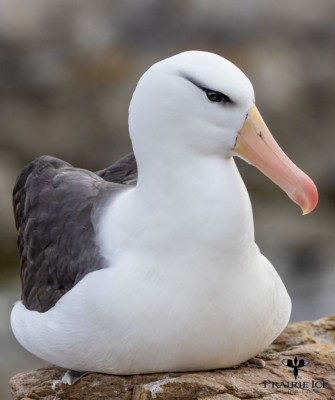

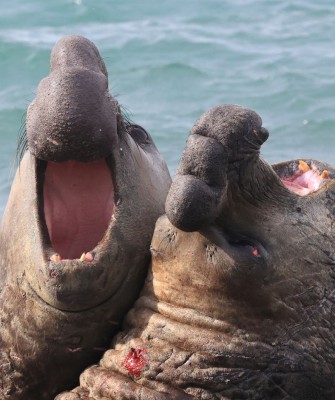

Tour Highlights
- Cruise onboard the m/v Hondius, an ice-strengthened expedition vessel
- See an old whaling camp on South Georgia, walking in Shackleton’s footsteps
- Witness some of the largest wildlife colonies on Earth, home to King, Magellanic, Adelie, Chinstrap, Gentoo, and Macaroni Penguins
- Experience outstanding wildlife observation on shore, on Zodiac excursions, and from the ship
- Look for Southern Elephant, Weddell, and Leopard Seals, as well as Humpback and Minke Whales, Orca, and more
- Learn about the environment, wildlife, history, and ecology from polar experts
- Photograph penguin rookeries backed by soaring, snow-covered peaks
- Cruise past huge icebergs in the icy Antarctic waters
- Come in early and join us for a complimentary day trip to Tierra del Fuego
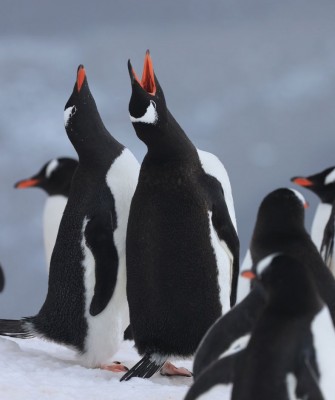
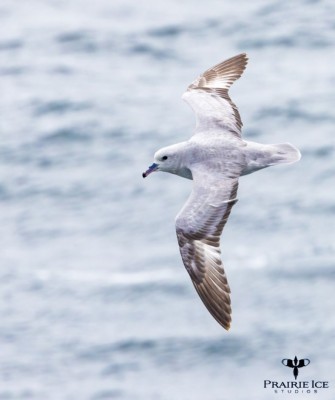

Trip Itinerary
Itineraries are guidelines; variations in itinerary may occur to account for weather, road conditions, closures, etc. and to maximize your experience.
Sat., Jan. 4 : End of the World, Start of a Journey
Your voyage begins where the world drops off. Ushuaia, Argentina, reputed to be the southernmost city on the planet, is located on the far southern tip of South America. Starting in the afternoon, you embark from this small resort town on Tierra del Fuego, nicknamed “The End of the World,” and sail the mountain-fringed Beagle Channel for the remainder of the evening. In the channel we may find Magellanic Penguin swimming in open waters, South American Tern, and Southern Fulmar in flight, and Magellanic Cormorant (Rock Shag) and Imperial Shag perched on rocky islands. Enjoy dinner as we set out into the open ocean by nightfall.
Sun., Jan. 5 : The Winged Life of the Westerlies
Several species of albatross, including Black-browed, Southern Royal, and Wandering may follow the vessel into the “westerlies,” along with Slender-billed Prion, Sooty Shearwater, Northern and Southern Giant Petrels, Wilson’s Storm Petrel, and other species. We are in the path of winds that blow around the Southern Hemisphere in the mid-latitudes, controlling much of the climate of Patagonia and southern South America. For seabirds they make foraging possible, indeed many never approach land except to breed and can relax or sleep on the wing.
There is also time to look for birds from the bridge or other observation areas, and if we encounter currents with krill, there are sea mammals to see as well.
Mon., Jan. 6 : Finding the Falklands
The Falkland (Malvinas) Islands offer an abundance of wildlife that is easily approachable, though caution is always advised. Our expedition guides take us to penguin colonies and open grassland areas to search for signature species. These islands are largely unknown gems, very British in feel from colonization, and still very much so after the UK prevailed in the 1982 war with Argentina. Falkland Steamer Duck may scamper away from us at our landings. Not only do some fascinating species of bird live here, but chances are great we see both Peale’s and the beautifully black and white Commerson’s Dolphin in the surrounding waters.
During this segment of the voyage, we may visit following sites in our mix of landings:
Carcass Island
Despite its name, this island is pleasantly rodent-free and hence bounteous with birdlife. Anything from breeding Magellanic and Gentoo Penguins to numerous waders and passerine birds (including endemic Cobb’s Wren and the Blackish Cinclodes, a regional specialty) live here. Striated Caracara cause a stir as they approach nesting colonies.
Saunders Island
On Saunders Island you can see the Black-browed Albatross and its sometimes-clumsy landings, along with breeding Imperial Shag and Rockhopper Penguin. King Penguin, Magellanic Penguin, and Gentoo Penguin can also be found here. Songbirds may include Falkland (Correndera) Pipit or Dark-faced Ground Tyrant. Brown Skua patrol the shag and penguin colonies.
Weather always controls our landings, but with good luck we hope to make both.
Tues., Jan. 7: The Seat of Falklands Culture
The capital of the Falklands and center of its culture, Port Stanley, offers a little Victorian-era charm: colorful houses, well-tended gardens, and English-style pubs are all to be found here. You can also see several century-old clipper ships nearby, silent witnesses to the hardships of 19th Century sailors. The small but interesting museum is also worth a visit, covering the early days of settlement up to the Falklands War. Approximately 2,100 people live in Port Stanley. Admission to the museum is included.
The small but interesting museum is worth a visit, covering the early days of settlement up to the Falklands War. Enjoy some free time to wander at will; take some cash with you as there may be small admission fees to local attractions or souvenirs to purchase in shops.
Our birders might like to work the edges of the town or the coastal shoreline in search of additional species such as Kelp Goose, Chilean Skua, and Black-crowned Night Heron. Some species carry over from the South American mainland but may be easier to find here, such as Austral Thrush, Long-tailed Meadowlark, and Black-chinned Siskin. Wetland sites may hold Two-banded Plover, both Silver and Yellow-billed Teal, and Chiloe Wigeon.
Wed., Jan. 8 & Thurs., Jan. 9: Once More to The Sea
En route to South Georgia, we now cross the Antarctic Convergence. The temperature cools considerably within the space of a few hours, and nutritious water rises to the surface of the sea due to colliding water columns. This phenomenon attracts a multitude of seabirds near the ship, including several species of albatross, shearwaters, petrels, prions, and skuas.
Fri., Jan. 10 – Mon., Jan. 13 : South Georgia Journey
Today you arrive at the first South Georgia activity site. Please keep in mind that weather conditions in this area can be challenging, largely dictating the program.
Over the next several days, you have a chance to visit the following sites:
Prion Island
This location is closed during the early part of the Wandering Albatross breeding season (November 20 – January 7). From January on, the breeding adults have found their partners and are sitting on eggs or caring for their chicks. Enjoy witnessing the gentle nature of these animals, which possess the largest wingspan of any bird in the world.
Fortuna Bay
Near beaches inhabited by various penguins (thousands of Kings!) and seals, you have the chance to follow the final leg of Shackleton’s route to the abandoned whaling base of Stromness. This path cuts across the mountain pass beyond Shackleton’s Waterfall, and as the terrain is partly swampy, be prepared to cross a few small streams. We are in the realm of flowering plants; watch for miniature wildflowers including the clover-like Burnett plant, Pixie-cap lichen, Antarctic Bedstraw, and Antarctic Hairgrass.
Salisbury Plain, St. Andrews Bay, Gold Harbour
These sites not only house the three largest King Penguin colonies in South Georgia, they’re also three of the world’s largest breeding beaches for Antarctic Fur Seal. Millions breed on South Georgia during December and January. Our timing lets us witness plenty of penguin courting, and we should find adult penguins covering eggs beneath their warm folds of skin. Hear their honking calls as beaks point skyward! It is breeding time in the mammal realm as well. Watch the large Fur Seal bulls keep a constant vigil (and occasionally fight) over territories where dozens of females have just given birth or are about to deliver. Populations are so high right now that it may affect our walking route—ship staff help us navigate.
Grytviken
Some 175,000 whales were processed here, mostly into oil, but also for meat and other products until the station closed in 1962. Now, in this haunting, abandoned whaling station, King Penguin walk the streets and Southern Elephant Seal lie around like they own the place … because they basically do. Here we visit the South Georgia Museum as well as Shackleton’s grave. Here it is customary to offer a toast of whiskey to “The Boss” prior to spreading some on his grave. Learn more about the life of Ernest Shackleton, especially of his 800-mile journey in the 22-foot wooden life boat, the James Caird. Their voyage from Elephant Island to South Georgia Island is truly an epic feat in the annals of sea adventures. Mountains loom behind the rusting buildings and graveyard, all very picturesque and moving.
Cooper Bay
A Zodiac cruise in Cooper Bay offers a great opportunity to see Macaroni Penguin below a large rookery. Numerous Fur and Elephant Seals are found on the beach, while majestic Light-mantled Albatross can be seen gracefully gliding above.
The world’s southernmost songbird, the South Georgia Pipit, has responded remarkably well to recent conservation measures to control exotic rats on the island and we should be able to find this special species at most landings on South Georgia. We should also find South Georgia Pintail and Antarctic Tern. Macaroni Penguin can be found along the southern coast near their breeding colonies and can often be found porpoising offshore as the ship moves between landings. Keep your eyes peeled for breeding Snowy Sheathbill.
Tues., Jan. 14 : Southward Bound
There may be sea ice on this route, and at the edge of the ice some South Polar Skua and Snow Petrel could join the other seabirds trailing the vessel south. Be on the lookout for both Fin and Humpback and house-sized icebergs! At sunset with a show of color they are especially incredible. Watch for South Georgia Diving Petrel. Ship lectures help you appreciate how seabirds survive and even thrive in these harsh conditions.
Wed., Jan. 15 : The Scenic Vistas of South Orkney
Depending on the conditions, you might visit Orcadas Base, an Argentine scientific station on Laurie Island in the South Orkney archipelago. The personnel here happily show you their facility, where we can enjoy expansive views of the surrounding glaciers. If a visit isn’t possible, you may instead land in Coronation Island’s Shingle Cove.
Thurs., Jan. 16 & Fri., Jan. 17: Entering the Antarctic
Enormous icebergs and a fair chance of Fin Whale sightings ensure there’s never a dull moment on this last sea voyage south. This is also our best chance to spot Antarctic Petrel.
Sat., Jan. 18 & Sun., Jan. 19 : Awe-Inspiring Antarctica
If the ice conditions permit, we now sail into the Weddell Sea. Here colossal tabular icebergs herald your arrival to the eastern side of the Antarctic Peninsula. Paulet Island, with its large population of Adélie Penguin, is a possible stop. You might also visit Brown Bluff, located in the ice-clogged Antarctic Sound, where you could get the chance to set foot on the Antarctic Continent itself.
If conditions aren’t favorable to enter the Weddell Sea from the east, the ship sets course for Elephant Island and heads into the Bransfield Strait, between the South Shetland Islands and the Antarctic Peninsula. Here you can attempt to access the Antarctic Sound from the northwest.
The breathtaking scenery continues in the Bransfield Straight and, if conditions allow further South in the Gerlache Strait.
Soak in time surrounded by an epic landscape of alpine peaks and mammoth glaciers calving at sea level. Gentoo Penguin, Leopard Seal, Weddell Seal, Humpback Whale, and Minke Whale are often seen here.
The volcanic islands of the South Shetlands are windswept and often cloaked in mist, but they nonetheless offer many subtle pleasures. A wide variety of flora (mosses, lichens, flowering grasses) and fauna (Gentoo and Chinstrap Penguins and Southern Giant Petrel) live here.
Throughout the area ice chunks provide haul outs for Crabeater and Weddell Seals and we may see the predatory Leopard Seal dining on penguins at sea. We also keep watch for the pretty Antarctic Shag. The whole region seems a wonderland, with deep blue ice appearing like giant, other-worldly sculptures. The sudden crack of calving glaciers can create a large wave splashing ashore on icebergs. Each cove features ice encrusted landscapes, jagged rocks, and cliffs carved and polished by glaciers. Rock towers surrounded by snow and ice are known as nunataks. Chinstrap Penguin pose, then pop into the water where they are as agile as fish. With luck you can see them slide across the snow on their bellies.
From a previous trip diary: “Penguins porpoise, whales roll and blow, skuas, shags, terns, and petrels fly by. A Snowy Sheathbill fluttered onto the ship deck, pecking in shallow pools of water for something to eat. The air is fresh and clean most of the time, except when downwind from a penguin colony. The scenic grandeur of mountains, glaciers, floating ice, and sea has become a constant. And the sea here is alive with penguins, seals, whales, and birds. It literally churns with life, including the rivers of tiny krill that support the Antarctic wildlife. Massive swarms of krill comprise the vital broad base of the Antarctic food pyramid.”
Mon., Jan. 20 & Tues., Jan. 21: Crossing the Drake—Passage Seabirds Abound
Over the next two days on the Drake Passage, you enjoy some of the same experiences encountered by the great polar explorers who first charted these regions: cool salt breezes, rolling seas, and possibly Fin Whale spouting up sea spray.
After passing the Antarctic Convergence—Antarctica’s natural boundary, formed when north-flowing cold waters collide with warmer sub-Antarctic seas—you are in the circum-Antarctic upwelling zone formed when north-flowing colder waters meet warmer seas.
This part of our voyage is far from lonely. While crossing the Drake, we’re greeted by the vast array of seabirds. We feast our eyes on possible Black-browed, Light-mantled, Gray-headed, Southern Royal, and Wandering Albatross from the ship. Cape and White-chinned Petrels accompany us.
Wed., Jan. 22 : There & Back Again
Every adventure, no matter how grand, must eventually come to an end. It’s now time to disembark in Ushuaia, but with memories and possibly friendships that accompany us forever.
You can leave late in the afternoon or on evening flights, or you may want to overnight so you can get your land legs back before travel—if so, our travel agent can help you make plans. You typically disembark in the morning with some free time ashore before going to the airport for International flights.
Cost of the Journey
Pricing is by cabin type, per person, and based on double occupancy. Please note that many cabin levels sell quickly—this is a VERY popular cruise. Let us know your preference and we can help you choose. Twin Porthole: $19,000 Twin Window: $19,900 Twin Deluxe: $21,100 Please ask for pricing at different cabin levels, including Quadruple and Triple Porthole Cabins, Superior Cabins, and suites. The earlier you sign on, the better the selection. Categories are limited, and it is first come, first served.
Tour price includes: Voyage aboard the vessel as indicated in the itinerary; All meals throughout the voyage aboard the ship including snacks, coffee and tea; All shore excursions and activities throughout the voyage by Zodiac; Program of lectures by noted naturalists and leadership by experienced expedition staff; Free use of rubber boots and snowshoes; Luggage transfer from pick-up point to the vessel on the day of embarkation in Ushuaia; Pre-scheduled group transfer from the vessel to the airport in Ushuaia (directly after disembarkation); All miscellaneous service taxes and port charges throughout the program; Comprehensive pre-departure material.
Optional Add-on: A sea kayaking program is available for an additional charge of approximately US$795 per person and must be reserved when booking your voyage (limited spots available); you must have some prior paddling experience.
Tour price does not include: Any airfare, whether on scheduled or charter flights; Pre- and post- land arrangements; Passport and visa expenses; Government arrival and departure taxes; Meals ashore; Baggage, cancellation and personal insurance (which is strongly recommended); Excess baggage charges and all items of a personal nature such as laundry, bar, beverage charges and telecommunication charges; The customary gratuity at the end of the voyages for stewards and other service personnel aboard (guidelines will be provided).
Please note: Cruise payments are subject to the terms and conditions of Oceanwide Expeditions, the cruise company we contract with, and may be fully non-refundable. These terms and conditions are primary over those of Naturalist Journeys.
So why go with Naturalist Journeys? First and foremost, it doesn’t cost you any more to book with us. We add the bonus of sending John Carlson as our group host (with at least 15 clients signed on) to share his years of Antarctic experience, keen eye for seabirds, and knowledge about Southern Ocean ecology. He is also a great help if you wish to upgrade your efforts at photography. Our group within the larger group has good fun at meals, extra help with birding, and a trip report and species list at the end to cherish. We want to make your travel hassle-free so also offer the services of our travel agent at no cost to help make your travel plans and do any pre-or post-cruise bookings in Ushuaia.
Travel Details
Arrival and Departure Airport: Ushuaia International Airport (USH)
Arrival Details: Please plan your flights to arrive January 3, 2025 at your leisure. We highly recommend you arrive January 3 in case of winter weather delays to ensure you do not miss the ship on January 4.
Departure Details: Please plan your flights to depart January 22, 2025 after 12:00 PM.
Travel Tips: We highly recommend you arrive a day early, on January 3. There are many hotel options in Ushuaia, but we recommend The Albatros Hotel. It’s easy to book online and located only a one-minute walk from the Port of Ushuaia, making it an ideal location for getting to the ship easily. It’s also within walking distance of many shops and restaurants.
This is a remote part of the world and from past experience we know it can get tricky rebooking your flight if it is canceled or there are significant delays. Please ask and we will connect you with our agent. Our operator and expedition staff are Oceanwide Expeditions, a company with impressive polar experience.
Entry Requirements: See "Essential Information" section under the "Know Before You Go" tab.
Items of Note
All itineraries are for guidance only. Programs may vary depending on local ice and weather conditions and in order to take advantage of opportunities to see wildlife. The on-board expedition leader determines the final itinerary. Itineraries may mention places that require permission to land, which must be granted by the relevant national authorities. Such permission is not granted prior to the publishing of these itineraries. Flexibility is paramount for expedition cruises.
Ship Information
M/v Hondius offers high-quality accommodation for 170 passengers in six grand suites with balconies (27 square meters, 291 square feet), eight junior suites (19 to 20 square meters, 205 to 215 square feet), eight superior cabins (20 to 21 square meters, 215 to 226 square feet), 11 twin deluxe cabins, (19 to 21 square meters, 205 to 226 square feet), 14 twin window cabins (12 to 14 square meters, 129 to 151 square feet) as well as 27 twin porthole cabins, two triple porthole cabins, and four quadruple porthole cabins that vary in size from 12 to 18 square meters, or 129 to 194 square feet.
One deck consists of a large observation lounge and separate lecture room, which are reserved for a wide variety of interactive workshops, exhibitions, and performances particular to Hondius. Though elegantly designed in stylish mid-century modern décor, this vessel holds true to Oceanwide’s distinctive cozy and informal atmosphere.
Ship Photos
Browse below for trip reports and species lists from past versions of this and other tours from this destination.
Antarctica
- November 2016
- November 2017
- February 2019
- November 2022
- January 2025
Torres del Paine
- February 2019
-
John Carlson
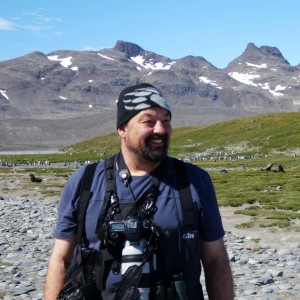
John Carlson
John’s first polar adventure was in 1994 when he worked as a general laborer at Palmer Station Antarctica. He has spent the last 29 years figuring out ways to continue to visit high latitudes. This has included stints researching Adelie Penguins, conducting biological inventories on the Antarctic Peninsula, participating in bird research efforts in the Bering Sea and northern Baffin Bay, and as a guide/naturalist on many expeditions to the Antarctic continent, as well as to South Georgia and the Falklands and Hudson Bay in the north. John obtained his BA in Zoology from the University of Montana and MS in Zoology and Physiology from the University of Wyoming. He was born and raised in northeastern Montana and has had a strong interest in wildlife in general and birds specifically for as long as he can remember. When he isn’t visiting the ends of the world, he is the Regional Grassland Conservation Coordinator for the US Fish and Wildlife Service Prairie and Mountain Region based in Billings, MT. He was formerly the Branch Chief for Resources and Sage-Grouse Implementation Lead for Montana/Dakotas Bureau of Land Management in Billings. Other relevant positions he has had include Wildlife Biologist with the BLM in Glasgow, MT and the Zoology Program Manager at the Montana Natural Heritage Program in Helena, MT. Additional irrelevant positions include bread store worker, fence builder, and snow shoveler at an Antarctic base. His life in Billings intersects with two teenage boys Benton and Crean and his long-suffering wife Laura. Two Flat-Coated Retrievers in the house, Sage and Quill, keep them all entertained and provide John endless hours of enjoyment each fall chopping cockleburs from their fur.
Other trips with John Carlson
-
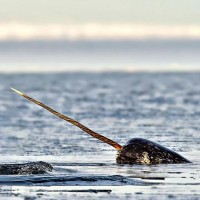 Into the Northwest Passage CLOSED - See our Aleutian Islands Cruise in June 2026!August 16 - September 1, 2025
Into the Northwest Passage CLOSED - See our Aleutian Islands Cruise in June 2026!August 16 - September 1, 2025 -
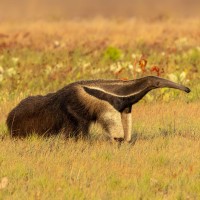 Guyana: Unspoiled WildernessJanuary 15 - 27, 2026
Guyana: Unspoiled WildernessJanuary 15 - 27, 2026 -
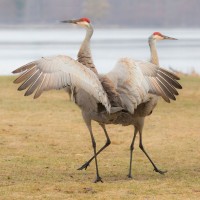 Platte River Cranes: A Migration SpectacularMarch 14 - 20, 2026
Platte River Cranes: A Migration SpectacularMarch 14 - 20, 2026
-
Essential Information +
Pace & Protocols +
Packing List +
Suggested Reading List +
Useful Links +
Photo credits: Banners: Antarctica Scenic (NJ Stock), King Penguins (NJ Stock), Weddell Seal (John Carlson), Magellanic Oystercatcher (John Carlson), South Georgia Scenic (NJ Stock) Thumbnails: Black-browed Albatross (John Carlson), Antarctic Prion (John Carlson), Elephant Seals (Steve Parrish), King Penguin (John Carlson), Gentoo Penguins (Steve Parrish), Southern Fulmar (John Carlson), Striated Caracara (John Carlson)






